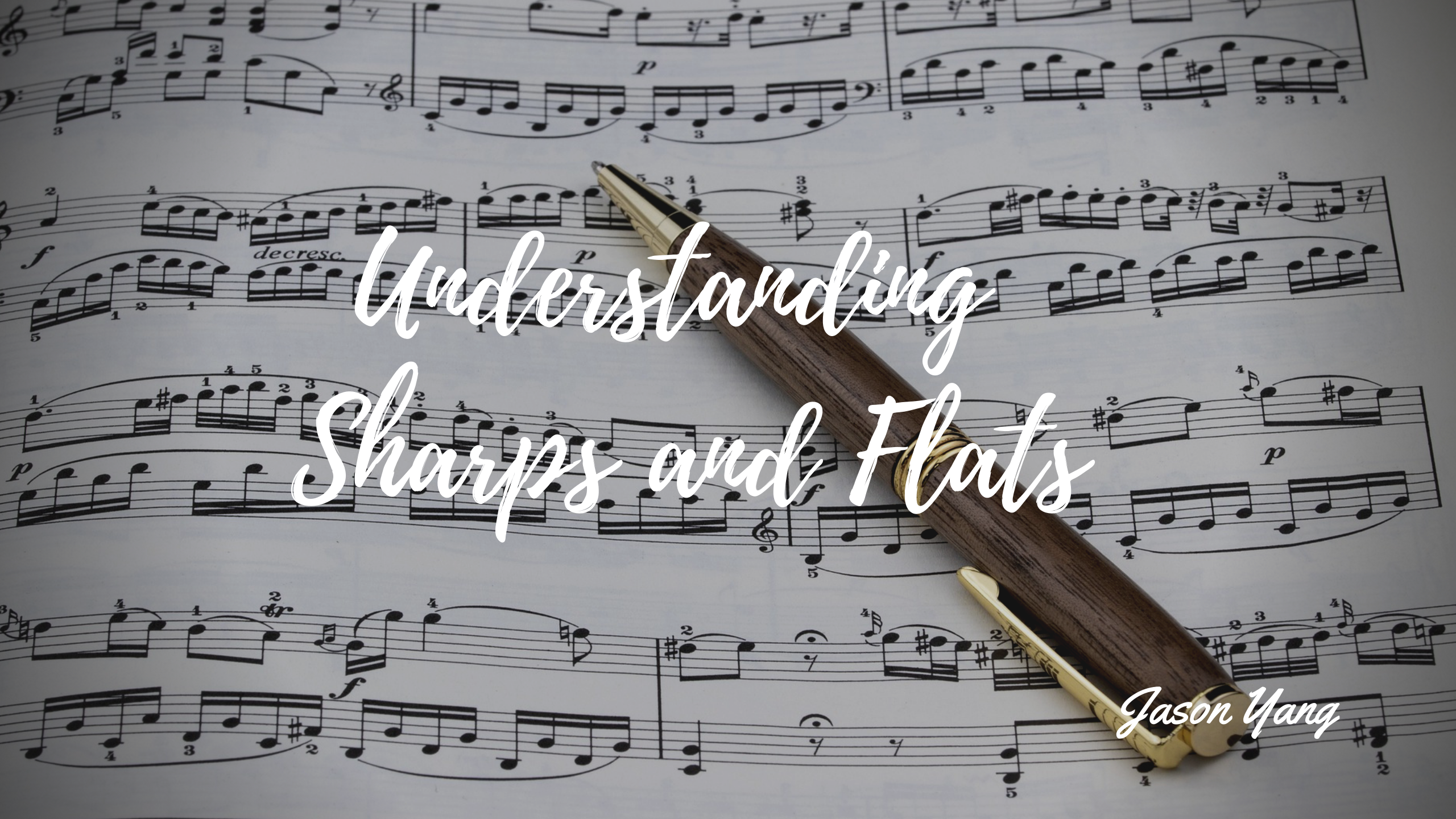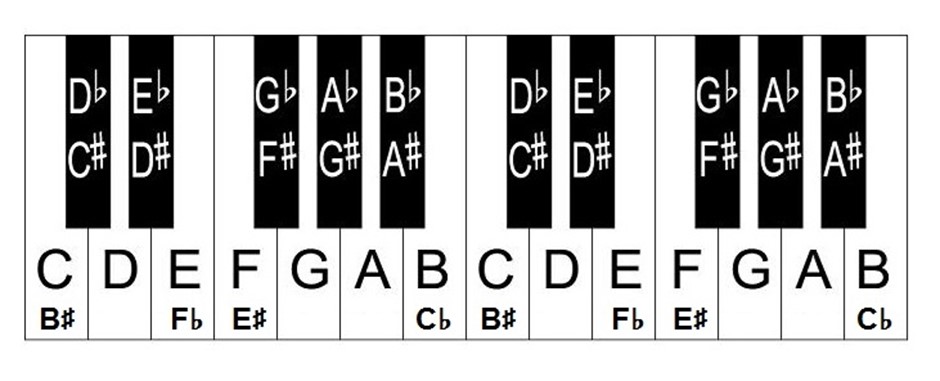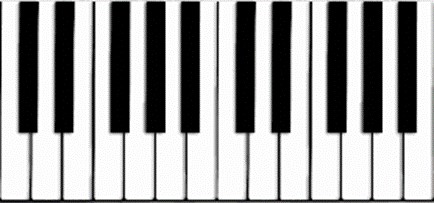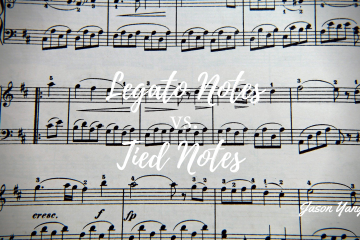2. Understanding Sharps and Flats

Black Keys – Sharps and Flats
Now that we’ve figured out all the white keys, let’s figure out all the black keys. Black keys are always the sharp(#) or flat(b) versions of a white key.
Sharps(#) are the black keys directly to the right of a white key. Flats(b) are the black keys directly to the left of a white key. As a result, every black note has two names.

While sharps(#) and flats(b) correspond to the black keys, the correct definition is that they are a semitone above and a semitone below.
Semitones and Tones
A semitone is the distance between two notes which are next to one another in pitch. In other words, moving to the note that is right next to the current note. For example, the note that is one semitone higher than C is C#. The note one semitone lower than E is Eb.
A tone means two semitones. In other words, two notes with one sandwiched in the middle. For instance, C and D, G and F, and Bb and C are each a tone apart.
Exercise 1: Draw the following image onto a sheet of paper. Without looking at the previous picture, write in the name of the notes from memory.

Exercise 2: Write in the note to find on the following table and play them on your piano.
If you want to check if you have the right notes, leave a comment in the comment area below and I’ll check it as soon as possible!
| Original note | Placement | Note to find |
| D | Semitone above | |
| G | Semitone below | |
| C | Tone below | |
| A | Tone above | |
| E | Semitone below | |
| F | Tone above | |
| B | Tone below | |
| G | Semitone above |
Key Signatures
Music key signatures are sharps and flats immediately following the clef sign. These sharps and flats affect every note on the line or space they are on for the entire duration of the composition.
The only times they don’t affect a note are when there’s a natural sign on that note or when there’s a key change.

I cover major and minor scales in more detail under the piano basics tag.
Check out my other blog posts for more free learning! If you have any questions please don’t hesitate to get in touch!



0 Comments